Social Listening Examples from 2025 That Inspire Action: Standout Wins
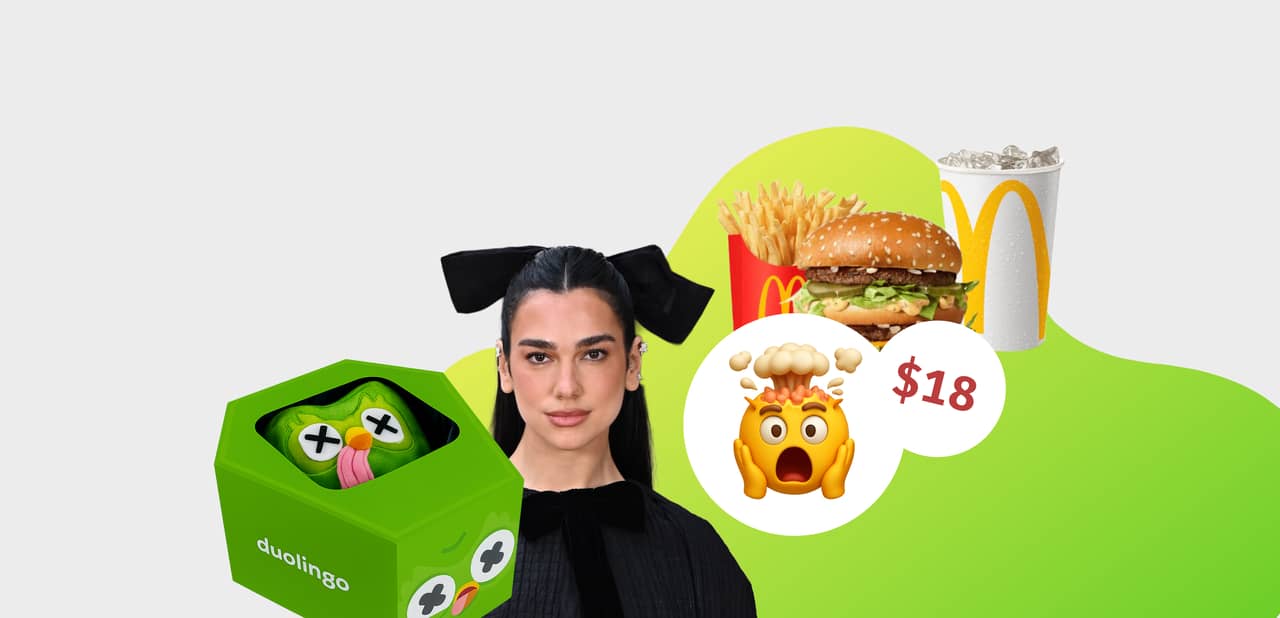
Social listening examples from 2025 reveal how brands can turn a whirl of online chatter into real business wins. Companies like McDonald's, Stanley, and Ryanair have become pros at catching trends early and acting on them fast.
These cases show that brands willing to really listen to social media conversations can transform feedback, viral moments, and even competitors' slip-ups into bold marketing performance. Trends explode in hours now, not days. One viral post—good or bad—can flip your brand’s reputation in a heartbeat.
In this article, you'll get step-by-step, effective social listening strategies from brands that nailed it. These aren't just feel-good stories—they're playbooks you can swipe for your own wins. From crisis management to product tweaks, these real-world examples show how to turn social noise into something you can actually use.
What is social listening?
Social listening is about monitoring online conversations around your brand, competitors, and industry to uncover meaningful insights that actually drive decisions. It's a step beyond old-school monitoring, which just counts mentions; social listening digs into context and the mood behind those mentions.
When you do social listening, you're picking up on what people are saying across social platforms—tracking conversations to understand how customers feel, what bugs them, and what they love.
Social media monitoring vs. Social listening:
Monitoring: Just alerts you when your brand pops up.
Listening: Actually analyzes conversations for deeper insights you can use.
Social monitoring tells you what people are saying. Social listening tells you why it matters and how you might want to respond.
It's more than just tracking your brand visibility. You want to keep tabs on industry insights, what people are saying about competitors, and trending topics that could move the needle for you.
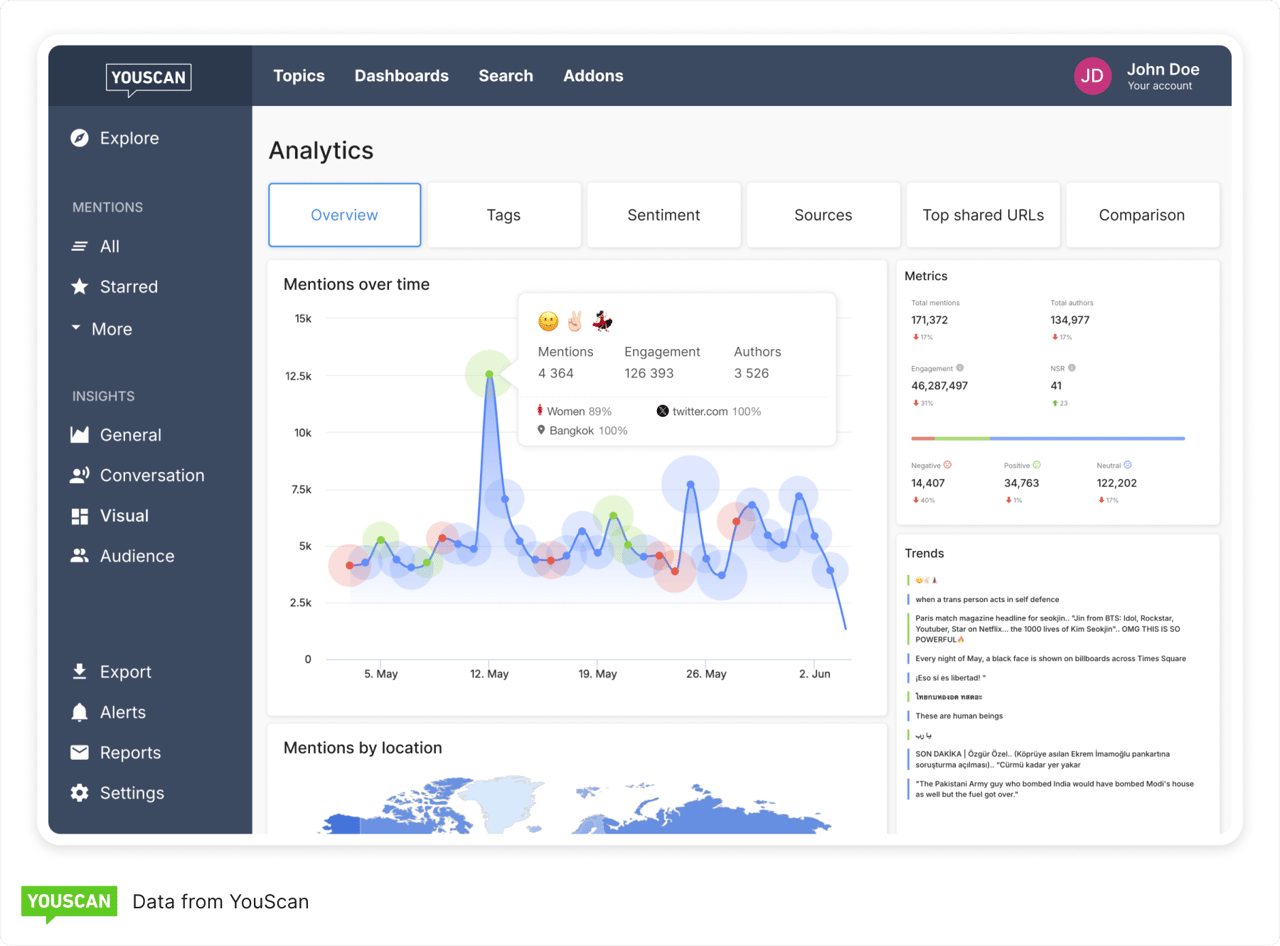

Key activities include:
Tracking mentions everywhere people talk
Analyzing the tone and sentiment behind conversations
Spotting complaints and compliments
Finding new trends before everyone else
Understanding how competitors are positioning themselves
Media monitoring is for news sites and traditional outlets. Social listening is about the platforms where real, unfiltered conversations happen.
Why social listening examples matter
Real-world examples cut through the fluff and show exactly how social listening delivers results. You can trace the path from customer conversations right to business action.
Examples highlight proven patterns you can borrow. Crisis responses, customer feedback loops, and competitor reactions—they all tend to rhyme across industries.
Learning just happens faster when you see what actually works. Let others do the trial and error; you can learn from their wins and mistakes in the battle for brand perception.
Key benefits of studying examples:
• Pattern recognition - You start to spot playbooks that work again and again
• Risk reduction - Avoid others’ mistakes before they become your own
• Speed to results - Jump straight to what works
• Action clarity - Get a clear sense of what steps lead to real outcomes
Examine how brands spot negative feedback early, use customer satisfaction data to change products, and shift marketing messages based on what's really being said out there.
Timing is everything. The gap between seeing a trend and acting on it can decide whether you win or get left behind. The best brands move quickly, while others get stuck in endless meetings.
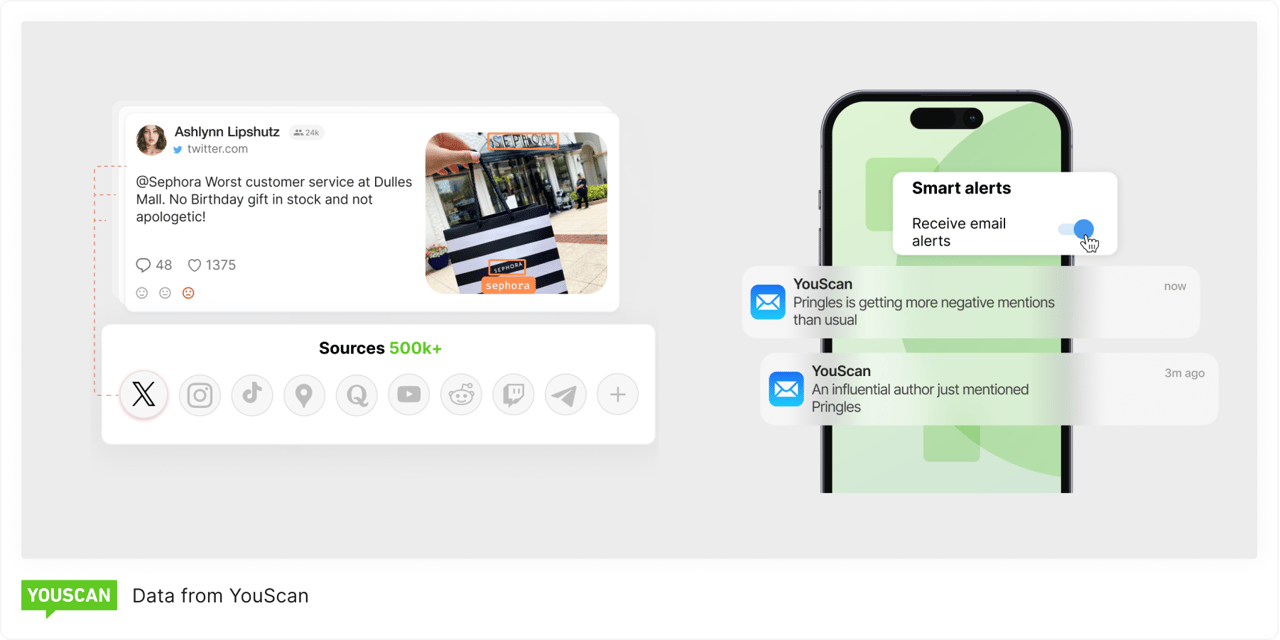

The more cases you study, the more obvious the patterns get. Whether you're handling criticism or jumping on a viral trend, there are frameworks you can adapt for your own situation.
In order to do all of these, the best way to go around it is using a social listening tool such as YouScan. Our Insights Copilot is the first AI agent designed for social listening, enabling researchers and analysts to filter out noise and uncover reliable, actionable insights.


Top social listening examples and industry trends (2025)
These brands turned social media post monitoring into real business wins. Each of these social listening examples shows how tracking brand mentions across major social media channels can open unexpected doors.
McDonald's price backlash response
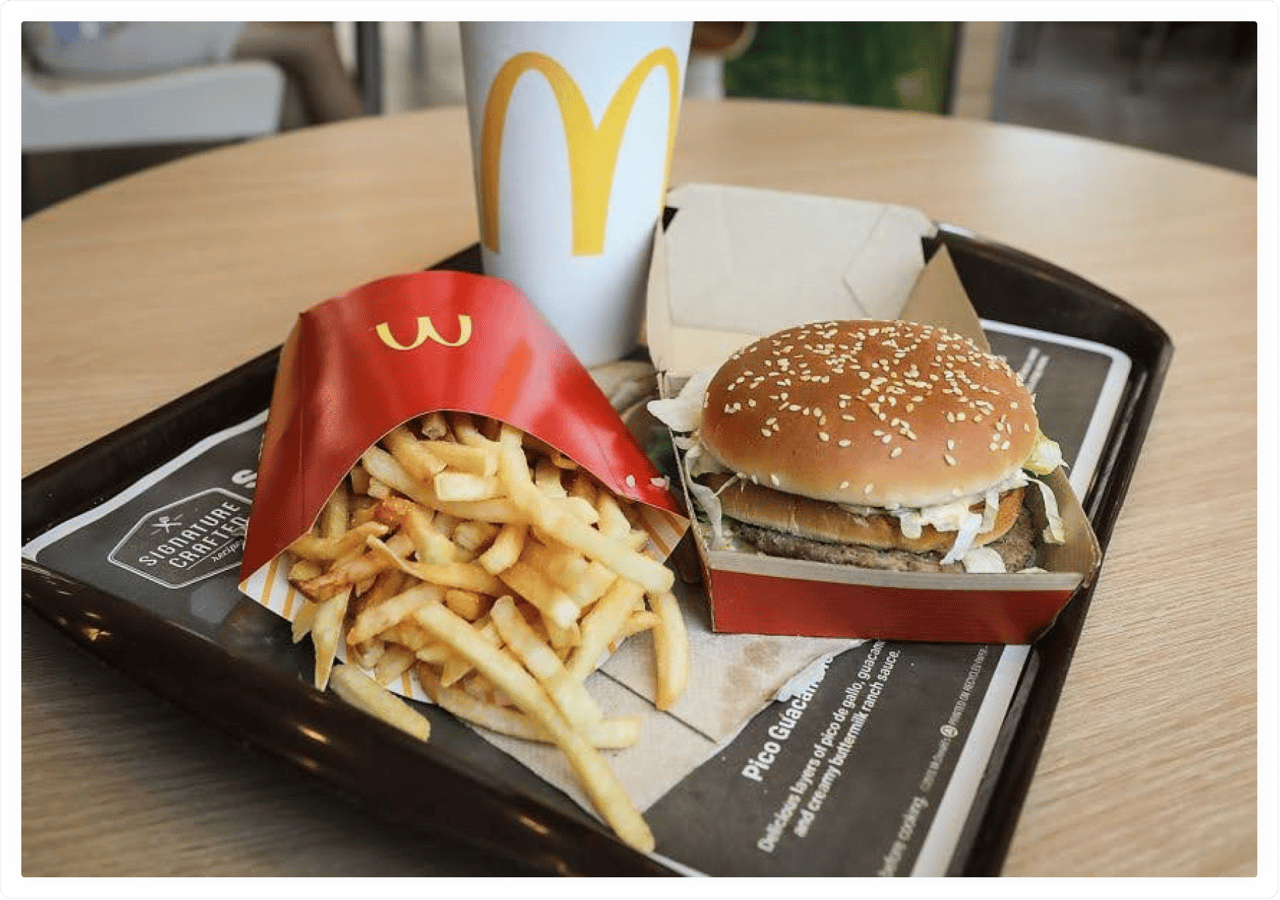

Customers started posting photos of $18 Big Mac meals, and suddenly everyone was talking about how McDonald's was getting too expensive. It got heated fast across all their social media accounts.
The brand watched for price complaints, menu gripes, and the general mood (which was not great, obviously).
McDonald's fired back with a $5 meal deal and had the CEO talk about pricing in shareholder calls. It cooled things down a bit, though some folks still weren't buying it.
Duolingo's "Duo's death" campaign
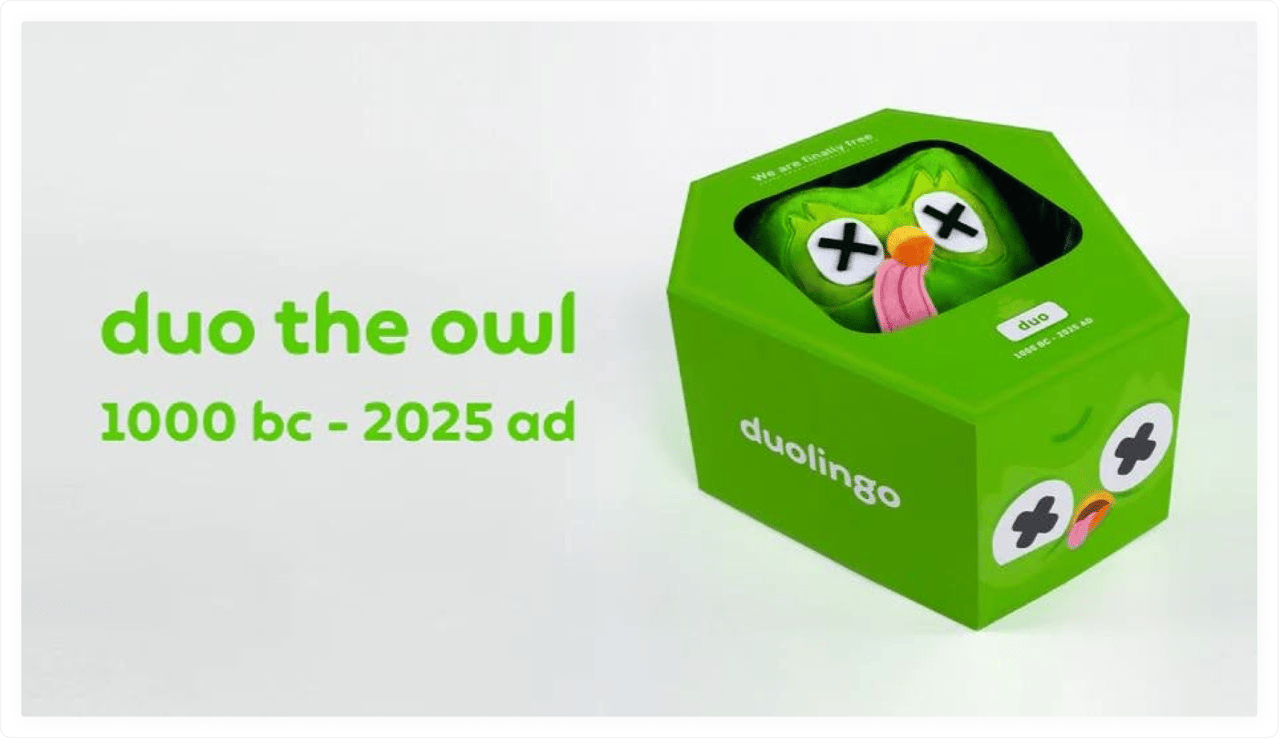

For years, users made memes about Duolingo's owl mascot being way too aggressive with notifications. It kind of became a running joke—and then a full-on cultural thing.
Duolingo kept an eye on those memes, mascot mentions, and all the weird humor their fans were creating. Instead of ignoring or fighting it, they leaned in and made a tongue-in-cheek "death" announcement for the owl. It was risky but felt totally in tune with their community's vibe.
The result? The marketing campaign exploded. Celebs like Dua Lipa even jumped in, and suddenly everyone was talking about Duolingo again. It’s a masterclass in not taking yourself too seriously and letting your fans run with the joke.
Stanley cup car fire story


This one’s wild—a customer’s car burned to a crisp, but their Stanley cup survived with ice still inside. The story went viral, and people couldn't stop talking about how tough those cups must be.
Stanley caught all the buzz about product durability and real-life testimonials. The company president even stepped in and offered to replace the customer’s entire car. That generous move turned a disaster into a feel-good moment.
It paid off big time: 21.8k extra brand mentions and a ton of authentic proof that their products actually do what they claim.
Samsung vs Apple's "Crush" ad

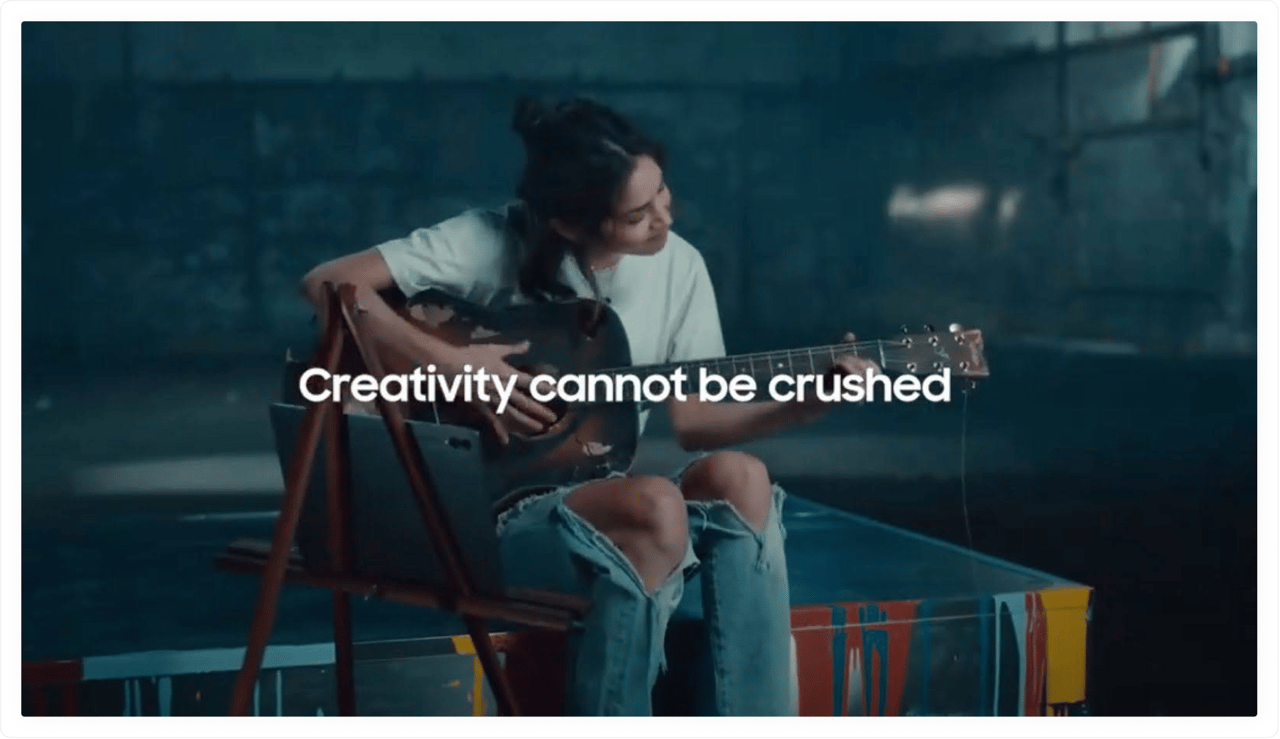
Apple dropped a controversial iPad ad where a hydraulic press destroyed creative tools, and the artist community was not having it. The backlash was instant.
Samsung saw the negative reactions, especially from artists, and quickly made a response video that celebrated creative tools instead of smashing them. It was a clever move that positioned Samsung as the brand that "gets it."
They managed to ride Apple's bad press without making the same mistake themselves. Smart, right?
Lyft's missing cat crisis
After a vet trip, a Lyft customer’s cat went missing, and the story blew up—over 10 million views, with people demanding Lyft do something.
Lyft observed the emotional posts, complaints, and how quickly the story was spreading. They jumped in, sent a team to help with the search, and even had the CEO get involved on social media channels.
The cat was found, and what could've been a PR nightmare turned into a heartwarming community win. Sometimes, you just have to show up.
These listening examples really prove that when you pay attention to what people are saying, you can build a more authentic brand presence and create moments your customers actually care about.
Patterns and lessons from these examples
Speed is everything when viral moments hit. Social listening tools let you spot trends before they take off. Brands that jump in fast reap the rewards.
Don’t just watch your own brand—track competitors too. Competitive analysis exposes gaps and timing windows. When a rival slips, a quick move can make your brand look golden.
Negative sentiment isn’t always bad—sometimes it’s a launchpad for viral wins if you respond authentically. People prefer honesty over corporate polish. Bold, real replies beat safe, scripted ones every time.

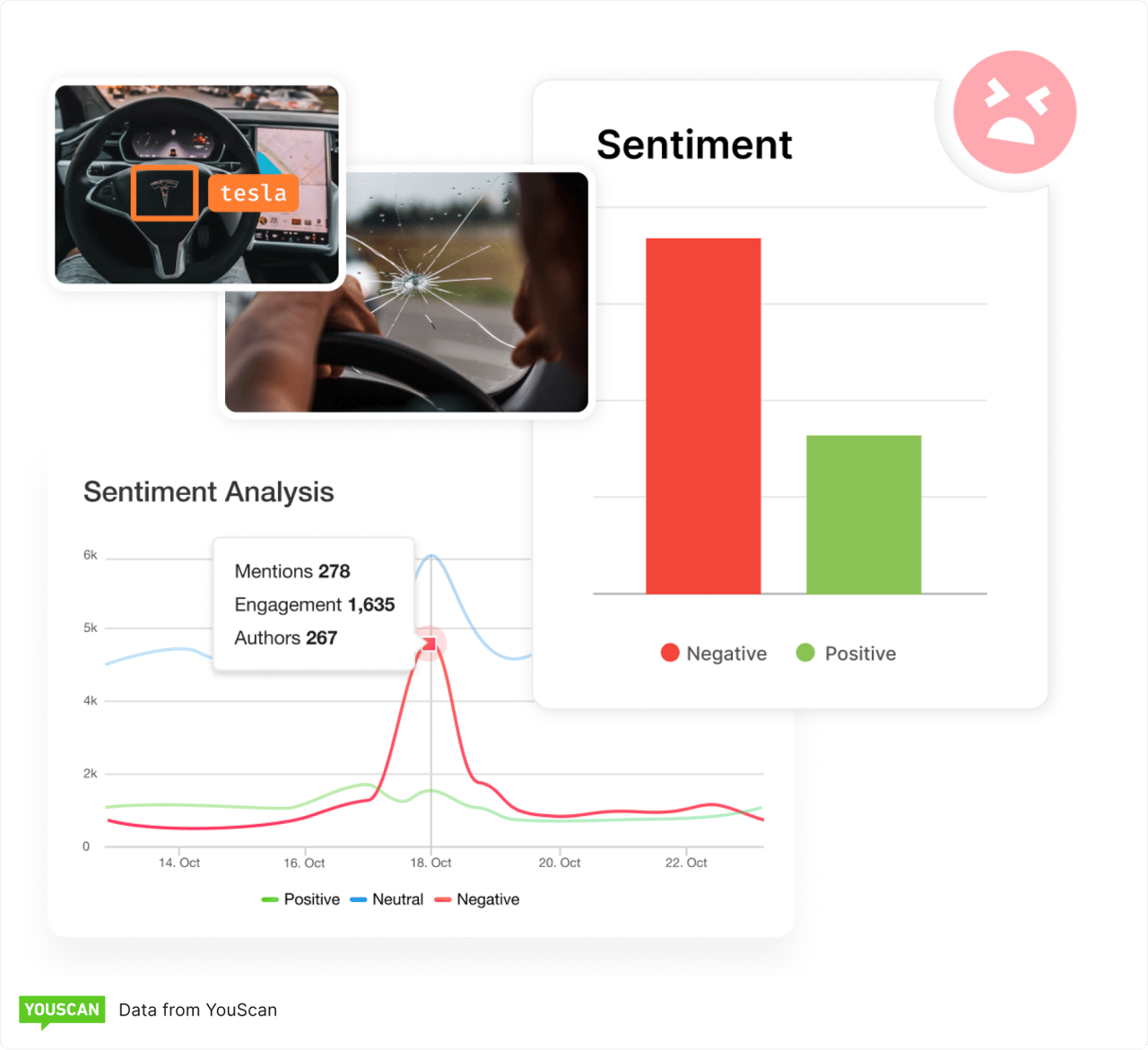
User-generated content makes up the majority of authentic brand mentions. Don’t limit yourself to your brand name—track product categories and industry trends. You might discover fans you didn’t even know you had.
Cultural conversations are goldmines for positioning. Let sentiment analysis guide you on when to join in—and when to sit one out. Sometimes silence is the smarter move.
Turn listening data into action. The best brand partnerships come from audience insights that reveal shared values. Don’t just collect positive mentions—put them to work in your campaigns.
Visual content matters too. Your target audience shifts depending on the platform. Track logos and products in images, not just words.
Consumer tastes shift every day. Social listening insights only matter if they lead to real decisions about products, messaging, or partnership marketing strategies.


How to implement social listening step by step
So, how do you actually use these social listening examples? Start with a plan. Figure out what you want to accomplish, and don’t overcomplicate it. Here's exactly how to do that:
1. Define your outcomes
Pick goals like cutting crisis response time or increasing user-generated content. Choose two or three metrics to measure your progress.
2. Build smart search queries
Monitor your brand and product names, execs, and competitor keywords. Don’t forget common misspellings and the hashtags people actually use.
3. Enable visual listening
Watch for your logos and products in photos. Lots of mentions happen without text—visual media monitoring catches what words miss.
4. Set up smart alerts
Get notified when mentions or sentiment suddenly spike. Set up thresholds for when both macro and micro influencers or creators talk about you.
5. Meet the moment quickly
When you get an alert, act fast. Reply, reshare, or get creative—just like the brands in these examples.
6. Use AI to summarize trends
Let conversational AI tools surface weekly patterns and drivers. It saves time, and you might spot something you’d otherwise miss.
7. Track Your Impact
Measure engagement, share of voice, and conversions with social media listening tools like YouScan. Use the data to keep leveling up your approach.
Your effective social listening strategy should be ongoing, not just a one-off project.
Social listening tool capabilities that enable these wins
Social listening tools are more than just fancy dashboards. The right features can turn a sea of random online chatter into insights that actually help your business.
Sentiment and emotion detection are big for catching crises before they blow up. If your brand starts getting a lot of angry posts, you want to know right away.
Topic clustering and trend surfacing help you spot new memes and hashtags before everyone else jumps on them. It’s about getting in early and making the most of the moment.
Visual media recognition means you can see when your logo or product shows up in photos and videos—even if nobody tags you. That’s a ton of extra brand exposure you might otherwise miss.
Influencer and community discovery find the people who are already talking about your industry or your competitors. These are the voices that can help—or hurt—you, so you want to know who they are.
Competitive benchmarking lets you see how you stack up against the competition. Are people talking about you more? Are your campaigns landing better? It’s all in the social listening data.
And when things move fast, real-time alerts are a lifesaver. YouScan can ping you in minutes, not hours, so you can turn fleeting moments into lasting momentum for your brand health tracker efforts.
Finally, conversational AI and copilot features take the grunt work out of analysis. Weekly briefings? Actionable insights? Tools like YouScan handle the heavy lifting, so you can focus on the creative moves that actually make a difference.
Conclusion
Social listening wins usually follow a straightforward path: signal → decision → outcome. The brands that are actually ahead in 2026? They aren't just gathering social data—they're jumping on it, fast.
McDonald's picked up on crisis signals early and turned complaints into menu tweaks. Duolingo noticed trends in user-generated content and ran with them, sparking some wild viral moments.
Stanley paid attention to competitor mentions and used that insight to sharpen their own product positioning. It's not rocket science, but it does take some guts to act quickly.
Want to try something that actually moves the needle? Pick one of these and give it a shot this week:
• Crisis monitoring – Set up alerts for negative mentions.
• UGC amplification – Hunt down and share customer content.
• Competitor tracking – Keep tabs on what folks are saying about your rivals.
Don’t overthink it. Just start. Social listening only pays off when you actually do something with what you hear.
In 2025, the brands really making waves are using AI tools that spot both visual and text signals way faster than any human could. They’re catching opportunities while everyone else is still scrolling and second-guessing.
Curious how to move from listening to truly winning? YouScan picks up the signals you’d otherwise miss, and does it with impressive speed. Your customers are out there talking. Will you notice before everyone else does?Book a demo today!
FAQ
What do you mean by social listening?
Social listening is basically keeping an eye on what people are saying about your brand, competitors, or industry online. You're tracking mentions, hashtags, comments—pretty much any relevant conversations happening on social media platforms that might matter to you.
You gather relevant insights from places like Twitter, Instagram, Facebook, TikTok, and Reddit. Then, you sift through all that chatter to spot trends or get a sense of how your target audience feels about your business.
What is the best social listening tool?
There's no single "best" tool for everyone—it really depends on your needs and what you can afford. YouScan, Hootsuite Insights, Sprout Social, and Mention are all solid picks.
YouScan, for instance, has AI sentiment analysis and emotion tracking, which is pretty handy. Just think about what features you actually need before you decide.
How to practice social listening?
Start by setting up alerts for your brand name and any relevant keywords that matter. Keep tabs on what people are saying about your competitors, too, and don't forget to follow hashtags.
Set up automated reports so you can check in on trends each week. And if someone reaches out—especially with a complaint—try to respond quickly. Use whatever you learn to tweak your products or marketing.
What are 5 examples of social media?
Here are five big ones:
• Facebook – still the world's largest social network.
• Instagram – all about photos and videos.
• Twitter/X – best for real-time social media conversation and news.
• TikTok – where short-form videos rule.
• LinkedIn – the go-to for professional networking.
Each of these social media platforms attracts a different social media users and supports different content types. It's smart to focus your listening where your target audience actually hangs out.


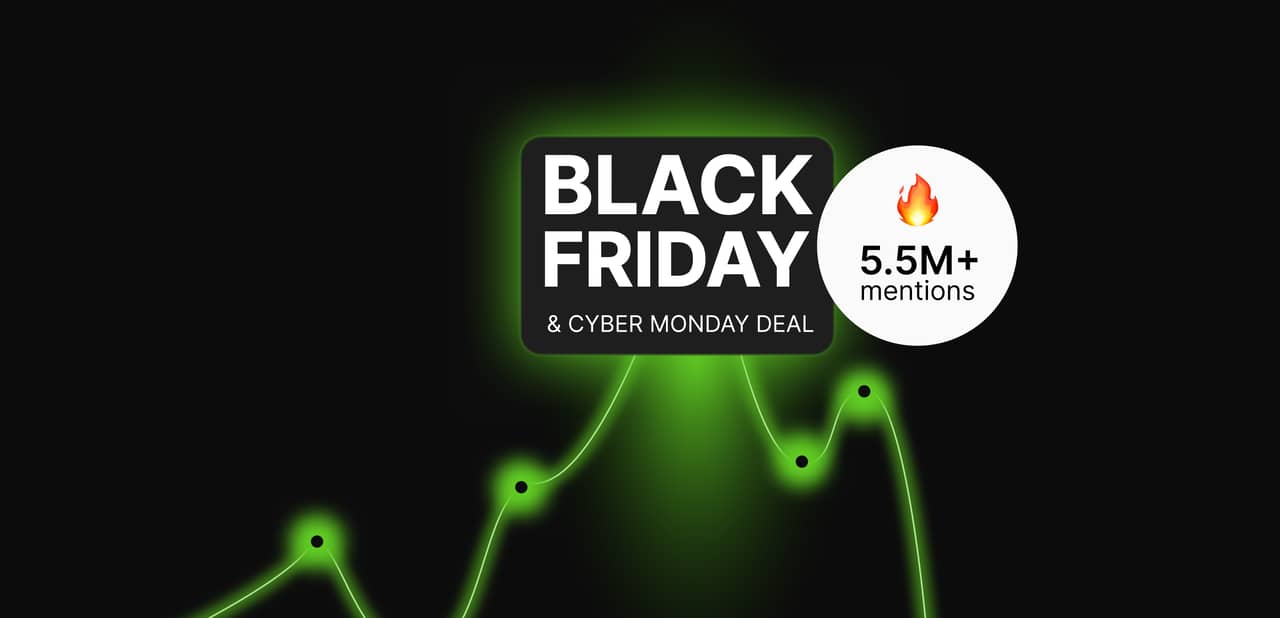
-1762529349.png)